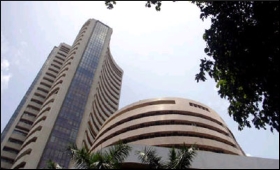|

|
Platform companies: Leveraging the India story in the long run
|
|

|
|
| Top Stories |
 |
|
|
|
Taponeel Mukherjee | 18 Oct, 2018
Real per capita GDP, stock market indices and consumption trends in
India are currently interesting. Even as real GDP at an aggregate and
per capita basis have broadly trended higher, equity market valuations
have fluctuated. Amidst the noise of market data, it is often easy to
forget that some of the best investment opportunities arise when market
valuations arent quite at their peak.
The single most
significant takeaway is that as real GDP has trended upwards, the equity
market, in real terms (inflation adjusted), has moved higher with
considerable volatility. What many view as market downturns are
opportunities to build and scale value-creating businesses.
Market
downturns in public markets (equity markets) invariably compress
valuations in private markets as well. One way to generate returns from
the growing GDP per capita over the next two decades is through creating
a valuable platform company to aggregate assets. Such a strategy is
especially relevant when high-quality assets can be acquired in a market
downturn.
At a fundamental level, a platform company would be
one that uses acquisitions to build a business. Capital allocation is
the principal function of any company, and in the case of a platform
structure, the capacity to inorganically grow the business through
meaningful acquisitions is the core objective.
Two fundamental
factors determine the success of the platform. Firstly, the pricing
environment needs to be one that is in some way a "buyer's market", i.e.
valuations provide for attractive acquisitions. Market downturns are
usually such an environment that is conducive to attractive pricing for
deals. The ability of the platform structure to make attractive
acquisitions is vital.
It is important to note that the platform
company making purchases provides sellers with liquidity in a market
downturn, thereby creating liquidity in relatively volatile market
conditions. Even in situations without a market downturn, attractive
deals are available through sourcing in the private markets or acquiring
assets from companies with impaired capital structures.
The
second most important factor for a platform structure is to get access
to relatively low-cost capital for a longer duration. A healthy balance
sheet for the parent business and focus on cash-flow rich businesses is
critical in this regard.
A platform business in India has the
advantage of one of the fastest-growing economies in the world. To
leverage the growth in the economy it will be critical to choose
products or services where the product or service meets two main
criteria. One, extremely low-risk of substitution; and, two, low
technology risk in the product.
Low-risk of substitution is that
the need for the product will not disappear in the near term. For
example, pharmaceutical products to manage chronic diseases will be a
requirement for the foreseeable future. While technology as a backbone
will be crucial to scaling the business, low-technology risk implies
that the product by its very inherent nature isn't at risk of
technological obsolescence. An example would be the demand for baby
foods in the FMCG space.
Using successful templates from other
economies, the products and services offered for a platform structure
can be for both B2C and B2B businesses. Such platforms usually work
better in relatively fragmented markets. The ability to acquire
relatively smaller firms from both private and public markets provides
an opportunity to scale a business to command a higher valuation
multiple relative to a smaller company.
Besides operational
efficiency, the strategy that a platform company adopts in India will be
dependent on factors such as whether the acquisitions are for regional
expansion or a broadening of the product and service suite offered by
the platform company. The critical determinant being: How the sum of
the parts adds up to create more value than the individual components.
For
instance, a successful consumer credit company in one region can create
a platform for growth in other regions utilising the existing
successful business model. Alternatively, a company selling baby food
can generate greater value by acquiring companies that sell products
related to baby care.
At a fundamental level, capital allocation
through mergers and acquisitions is the cornerstone of creating a
successful platform structure. In the Indian context, public market
valuation volatility that compresses valuations provides long-term
investors with entry points to develop platform companies to leverage
the India growth story.
|
|
|
| |
|
|
|
|
|
|
|
|
|
|
|
|
|
|
| |
| Customs Exchange Rates |
| Currency |
Import |
Export |
US Dollar
|
84.35
|
82.60 |
UK Pound
|
106.35
|
102.90 |
Euro
|
92.50
|
89.35 |
| Japanese
Yen |
55.05 |
53.40 |
| As on 12 Oct, 2024 |
|
|
| Daily Poll |
 |
 |
| Do you think Indian businesses will be negatively affected by Trump's America First Policy? |
|
|
|
|
|
| Commented Stories |
 |
|
|
|
|
|
| |
|